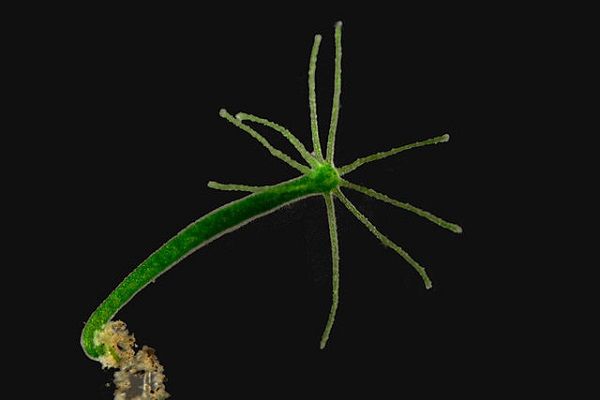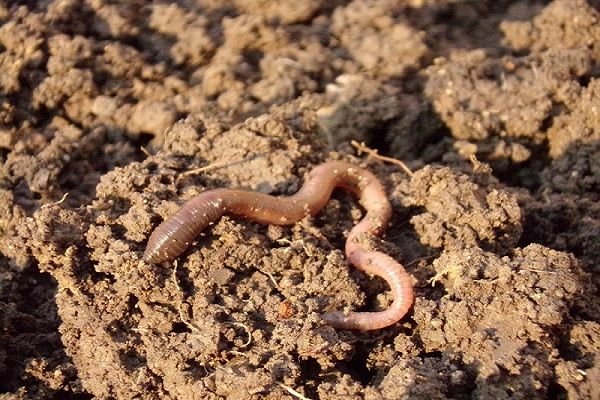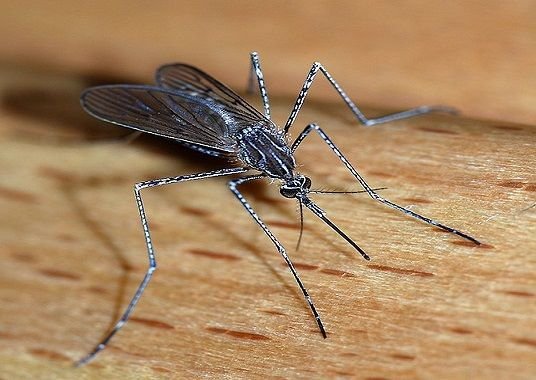Let's learn something cool about feeding in animal kingdom
Feeding is an important characteristic that keeps an organism alive. A typical human might not survive without food beyond twenty-one days, though when it comes to water it is a different story entirely. I have seen instances of claims by some factions of a certain religion that they survived beyond twenty-one days without eating or drinking in the name of fasting; the scientist in me do not think it is possible.
Be that as it may, when it comes to feeding among the living organisms, a wide variety of mechanisms exist. Basically, organisms in plant kingdom would rather stick primarily to photosynthesis although some could feed parasitically or even carnivorously. However, those in the animal kingdom have quite a number of ways which they could be depending on the group the organism belongs.
One of such feeding mechanisms in the animal kingdom is filter and suspension feeding which usually involves the use one of the pseudopodia, flagella, cilia, mucus trap, tentacles, chitinous setae or any other varying filtering mechanisms. This feeding mechanism is usually associated with aquatic animals and it involves procurement of food through random straining from water. Filter feeding is common among the animals in the phylum Mollusca.
The filter-feeding mechanism is best illustrated in mussel, Mytilus edulis which is mostly found attached to rocks and stones in shallow coastal water. The animal belongs to a class of molluscs knows as the bivalves. The bivalves are characterized by a shell with two halves or valves which are hinged together. Two large gills are located on each side of the shell. Covering the gills are fine, beating hair-like structures known as the cilia.
The movement of the cilia causes a current of water to enter the animal via a tube-like structure known as the inhalant siphon and leave via another similar structure known as the exhalant siphon. The water which enters contains the food of the mussels, such as microscopic protozoa and algae. The cilia contains numerous secretory cells scattered among them which produce streams of sticky mucus which trap the food particles.
The trapped food is then swept by special bands of cilia towards the mouth which is located near the front end of the gill. Ciliated structures surrounding the mouth sort out the food particles to some extent before entering the mouth.
Another type of filter-feeding involves the use of tentacles and it is well illustrated in the group of animals known as Cnidarians. The Cnidarians are all carnivores and posses tentacles for capturing foods. The tentacles have batteries of stinging cells in their outside surfaces known as nematoblasts. The stinging cells have projecting hair-like triggers which when stimulated, release their contents in an explosive manner. The stimulation has to be done in two simultaneous ways including touch and scent.
Several types of nematoblasts exist in nature. While some have barbs which penetrate the prey in the initial explosive discharge, others have minor hooks that cling to the prey, entangling it in the process. The animal then grasps the prey with its tentacles which pass it to the mouth for ingestion. The mouth opens widely and the prey enters the internal cavity for the first extracellular phase of digestion. Once the food has been broken down to small fragments, they are engulfed by phagocytosis into cells lining the enteron and is completed intracellularly.

Next on the feeding mechanisms exhibited by animals is detritus feeding. By definition, detritus is the name called fresh or decaying organic matter. Animals that feed on detritus are collectively referred to as detritivores. A good example is found in earthworm. The detritivores play quite an important role in ecosystem functioning because they represent the first stage in the recycling of dead materials.
The earthworm, a typical detritivore consumes fragments of detritus either from the soil surface or after the food has been pulled into its hole by its mouth. The food is bitten off in little pieces, moistened by alkaline secretion of the earthworm's pharynx before being swallowed. The food is digested within the alimentary canal which is straight and runs from mouth to anus and undigested food materials are egested from the anus as worm casts.

Biting and chewing is another feeding mechanism common to a particular group of animals, especially within the arthropods. Majority of biting and chewing arthropods are pest of economic crops and plants in general. Typicalizing biting and chewing is the locust. The mouth parts are located on the lower surface of the head. It is made up of the upper lip or the labrum, a pair of jaws or the mandibles, a pair of maxillae and a lower lip known as the labium.
During feeding, a leaf is gripped between the upper and lower lips while the jaw work from side to side to cut, shred and crush small pieces from the leaf with some help from the maxillae. The saliva containing lower lip with the help of maxillae then pushes the moistened food into the mouth where it become swallowed. There are some sensory processes known as palps that conferred feeling, smelling and food tasting ability on the locust.

Some group of insects feed on fluids using specialized mouthparts for sucking while some need to pierce before sucking. The sucking insects such as butterfly possess a feeding device known as proboscis. The proboscis is formed from the merging of two maxillae. Mandibles or jaws are absent unlike what is obtainable in their locust counterparts and sensory palps are less well developed than in locust. At rest, the proboscis is coiled up under the head.
When it is feeding time, a reflex causes contraction of muscles inside each half of the proboscis which uncoil and straighten it. The proboscis is extended into corolla of flowers and its tip placed directly on the flower nectar which is a dilute solution of sugar. Thereafter, the muscles in the pharynx begin to contract, causing the nectar to be sucked into the mouth of the insect.

Piercing and sucking insects have their proboscis modified for piercing prior to sucking. The maxillae fit together to from a sharp piercing tube called the stylet which is enclosed in a sheath formed by an elongated labium and mandibles. The stylet can be pushed through the plant tissues and into the sieve tube of the phloem whose contents are already under pressure and are therefore forced up the stylet tube into the gut of the insects.
References
If you write STEM (Science, Technology, Engineering, and Mathematics) related posts, consider joining #steemSTEM on discord here. If you are from Nigeria, you may want to include the #stemng tag in your post. You can visit this blog by @stemng for more details. You can also check this blog post by @steemstem here and this guidelines here for help on how to be a member of @steemstem. Please also check this blog post from @steemstem on proper use of images devoid of copyright issues here

Hi LOVE YOUR POST MAN!!! LIKE MY POST TOO!!!!! HERE IS THE LINK: https://steemit.com/bots/@abusereports/last-minute-upvote-list-2018-05-02
Hi LOVE YOUR POST MAN!!! LIKE MY POST TOO!!!!! HERE IS THE LINK: https://steemit.com/bots/@abusereports/last-minute-upvote-list-2018-05-02
Hi LOVE YOUR POST MAN!!! LIKE MY POST TOO!!!!! HERE IS THE LINK: https://steemit.com/bots/@abusereports/last-minute-upvote-list-2018-05-02
Hi LOVE YOUR POST MAN!!! LIKE MY POST TOO!!!!! HERE IS THE LINK: https://steemit.com/bots/@abusereports/last-minute-upvote-list-2018-05-02
Hi LOVE YOUR POST MAN!!! LIKE MY POST TOO!!!!! HERE IS THE LINK: https://steemit.com/bots/@abusereports/last-minute-upvote-list-2018-05-02
Hi LOVE YOUR POST MAN!!! LIKE MY POST TOO!!!!! HERE IS THE LINK: https://steemit.com/bots/@abusereports/last-minute-upvote-list-2018-05-02
It is sort of eerie to read that animals in several diverse ways different from how we feed. It makes me wonder if they take anytime out to enjoy the food as we do. What am I saying? Do these filter feeding dudes even have taste buds?
Piercing and suckling insects!!!!!! Tell me their roots, I wanna clear their entire species...
This is quite nice... Keep feeding us
i am not a biologist but i found this post interesting and comprehending.. Have heard and read little on biting and chewing insects as well as piercing and sucking(mosquito for instance is a glaring example) in my biology then in sec school. But filter feeding is not strange but i had little knowledge about it until now. Thanks for the knowledge shared